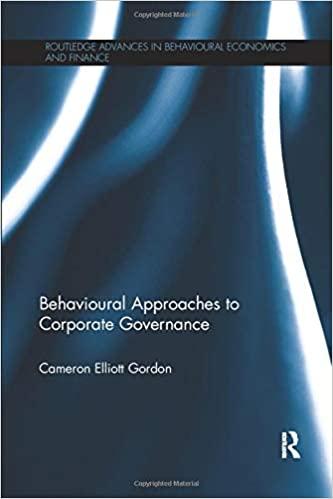Answered step by step
Verified Expert Solution
Question
1 Approved Answer
3 Business Combinations A merger boom comparable to those of the 1960s and mid-1980s occurred in the 1990s and into the new century. The merger


3 Business Combinations A merger boom comparable to those of the 1960s and mid-1980s occurred in the 1990s and into the new century. The merger activity of the 1960s was associated with increasing stock prices and heavy use of pooling-of-interests accounting. The mid-1980s activity was associated with a number of leveraged buyouts and acquisitions involving junk bonds. Merger activity in the early 1990s, on the other hand, appeared to involve primarily purchases with cash and standard debt instruments. By the mid-1990s, however, many business combinations were being effected through exchanges of stock. In the first decade of the new century, the nature of many business acquisitions changed, and by late 2008 , the merger boom had slowed dramatically. a. Why were so many of the business combinations in the middle and late 1990 s effected through exchanges of stock? b. What factors had a heavy influence on mergers during the mid-2000s? How did many of the business combinations of this period differ from earlier combinations? Why did the merger boom slow so dramatically late in 2008 and in 2009? What is the new focus since that time? c. If a major review of the tax laws were undertaken, would it be wise or unwise public policy to establish greater tax incentives for corporate mergers? Propose three incentives that might be used. d. If the FASB were interested in encouraging more mergers, what action should it take with regard to revising or eliminating existing accounting standards? Explain. 3 Business Combinations A merger boom comparable to those of the 1960s and mid-1980s occurred in the 1990s and into the new century. The merger activity of the 1960s was associated with increasing stock prices and heavy use of pooling-of-interests accounting. The mid-1980s activity was associated with a number of leveraged buyouts and acquisitions involving junk bonds. Merger activity in the early 1990s, on the other hand, appeared to involve primarily purchases with cash and standard debt instruments. By the mid-1990s, however, many business combinations were being effected through exchanges of stock. In the first decade of the new century, the nature of many business acquisitions changed, and by late 2008 , the merger boom had slowed dramatically. a. Why were so many of the business combinations in the middle and late 1990 s effected through exchanges of stock? b. What factors had a heavy influence on mergers during the mid-2000s? How did many of the business combinations of this period differ from earlier combinations? Why did the merger boom slow so dramatically late in 2008 and in 2009? What is the new focus since that time? c. If a major review of the tax laws were undertaken, would it be wise or unwise public policy to establish greater tax incentives for corporate mergers? Propose three incentives that might be used. d. If the FASB were interested in encouraging more mergers, what action should it take with regard to revising or eliminating existing accounting standards? Explain
Step by Step Solution
There are 3 Steps involved in it
Step: 1

Get Instant Access to Expert-Tailored Solutions
See step-by-step solutions with expert insights and AI powered tools for academic success
Step: 2

Step: 3

Ace Your Homework with AI
Get the answers you need in no time with our AI-driven, step-by-step assistance
Get Started


